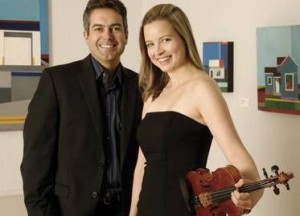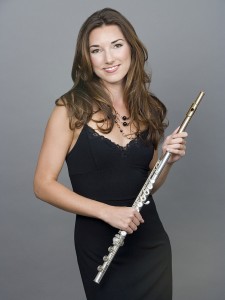NOVA GALLERY SERIES, Julie Nester Gallery, Park City, April 16; additional performance 3 p.m. April 19, Art Barn, tickets at the door, www.novaslc.org
Beethoven’s 10 violin sonatas cover a large chunk of his creative life. They explore the violin’s capabilities as a conveyor of dramatic passion as well as lyricism. They also delve into the relationship between the violin and the piano. All in all, they are remarkable works and staples of the repertoire.
For the past two seasons these sonatas have been the focus of the NOVA Chamber Music Series’ Gallery Series. As played by Utah Symphony associate concertmaster Kathryn Eberle and symphony principal keyboardist and NOVA artistic director Jason Hardink, this mini series has been a wonderful addition to NOVA’s other offerings.
The final installment of the Beethoven series took place yesterday in the intimate confines of Park City’s Julie Nester Gallery (the program will be repeated Sunday in Salt Lake City’s Finch Lane Gallery at the Art Barn).
These sonatas need an exceptional violinist and pianist and a strong collaborative effort between the two players to be successfully executed. And that is certainly the case with Eberle and Hardink. At Thursday’s concert, at which the last two sonatas were played (no. 9 in A major, Kreutzer, and no. 10 in G major, op. 96), the duo showed they were on the same wavelength, giving a very musical interpretation of both and balancing each other perfectly. Both sonatas received a splendid treatment at their hands.
First up was the op. 96. Atypical for Beethoven, the op. 96 is a predominantly lyrical work — even gentle at times. Eberle and Hardink gave a nuanced reading that underscored the gorgeously crafted expressiveness and subtle twists and turns of the score. They let the music flow naturally and brought a spontaneity to their playing that was refreshing.
The Kreutzer is, of course, the most famous of the 10 violin sonatas. And musically it’s the kind of work one expects from Beethoven — bold, brazen, passionate and powerful. And the two delivered the goods. They gave a spectacular account that captured the drama and fervor of the music. They played it forcefully, but their dynamic reading nevertheless conveyed the lyricism that underlies the music, even at its fervent loudest.
Interspersed between the Beethoven were the last two Klavierstücke by the contemporary German composer Wolfgang Rihm. Hardink, who is a master of new music, gave a remarkably lucid and radiant account of the Sixth, Bagatellen, and the Seventh.
There couldn’t be two more disparate pieces than these two. The Sixth is a quiet, reflective piece that plays with the concepts of time and silence, but in a very imaginative manner. On the other hand, the Seventh, based on the opening motivic fragment of Beethoven’s last piano sonata, op. 111, is an intense, demonic statement that is rhythmically charged and driven. Its relentless energy and vitality was brought home quite forcefully by Hardink’s powerful playing. And in both cases, Hardink’s innate sense of interpretation served these two pieces well.


